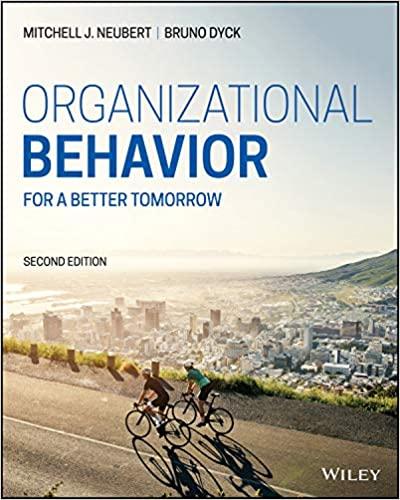Product recalls are common, unfortunately. In addition to poor decisions that create the faulty product in the
Question:
Product recalls are common, unfortunately. In addition to poor decisions that create the faulty product in the first place, there is the decision as to whether to admit the mistake and recall the product. A classic and instructive example of a recall decision-making process gone awry is what doomed the Ford Pinto. Imagine it is the early 1970s, and Ford Motor Company is working hard to develop its \($2,000\) Pinto, which the company hopes will compete effectively against the popular low-priced Volkswagen Beetle. To lower production costs, Ford engineers decided to locate Pinto’s gas tank behind the rear axle, just in front of the rear bumper, where it is vulnerable to being ruptured in an accident.
Now imagine that it is a few years later and you are Ford’s Field Recall Coordinator. You have just received data showing that its design makes the Pinto prone to explosions when the car is reared. You immediately recognize that a decision needs to be made, and so you gather data and develop two options. The first option is to recall all 12.5 million Pintos on the road and install an \($11\) baffle plate between the fuel tank and the axle housing. The estimated cost of this option is \($137.5\) million. The second option is to not recall the vehicles but instead prepare to pay the damages that arise from lawsuits. Using data provided by the U.S. National Highway Safety Transportation Administration, you estimate that the total cost of this option will be \($49.5\) million (\($200,000\) for each of 180 anticipated burn deaths, \($67,000\) for each of 180 anticipated burn injuries, and \($700\) for each of 2,100 anticipated burned vehicles). The numbers send a clear message, so senior managers at Ford choose the second, lower-cost, option, thereby saving the company \($88\) million. However, the public is outraged when it finds out about the cost-benefit analysis that was used to make this decision. In February 1978, a California jury awarded a Pinto accident victim \($125\) million in punitive damages (subsequently lowered to \($3.5\) million by the judge). In 1980, Ford stopped making the car.
Many people are still shocked by this true story but in a similar context, most would likely be tempted to make a similar choice. To understand why, consider the experiences of Dennis Gioia, Ford’s Recall Coordinator when the problems with the Pinto were first noticed. As an MBA student, Gioia had often been critical of business. When his classmates were surprised by his accepting a job at Ford, he explained that he hoped to influence social change from within the company to prod it into socially responsible action.
Soon, however, Gioia became resocialized in the process of competing for attention with other MBAs who had recently joined the company: “The psychic rewards of working and succeeding in a major corporation proved unexpectedly seductive,” he recalls. As Recall Coordinator, the basic routines he inherited—the “scripts” decision-makers learn and follow—became second nature to him, along with the organizational culture and unspoken norms. Gioia was no longer the Recall Coordinator in 1978, but if he had pushed earlier to recommend a recall, when the Pinto problems first surfaced, perhaps future damage could have been avoided. He recalls his failure to do so: “To do the job ‘well’ there was little room for emotion. Allowing it to surface was potentially paralyzing and prevented rational analysis about which cases to recommend for recall.” The routines, or programmed decisions, that he acquired in his position seemed practical and rational. They provided Gioia with ways of behaving and making decisions, and he lacked well-developed scripts to enact his countercultural values. In short, organizational scripts and routines can have a powerful effect on how organizational members make decisions.
1. Describe the four steps of the decision-making process evident in this case.
2. The case illustrates how quickly business students—even students known for being countercultural—may adopt their employer’s scripts and embedded values when they start a new job. Identify strategies students can use to avoid this.
3. Refer back to the discussion about moral points of view found in Chapter 4, and explain whether you think that when it was made, Ford’s decision not to recall the Pinto was ethical in terms of consequential utilitarianism, and terms of virtue theory.
Step by Step Answer:

Organizational Behavior For A Better Tomorrow
ISBN: 9781119702856
2nd Edition
Authors: Bruno Dyck, Mitchell J. Neubert





